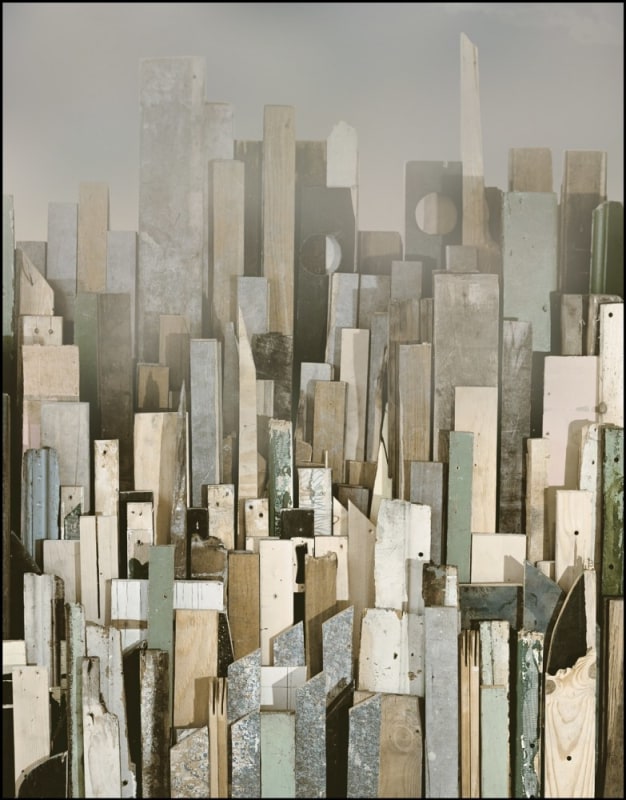
his eyes had seen enough and in protest had begun to cloud, 2001
C Print on Aluminum
20″ x 15 3/4″
Allan deSouza's photographs alternate between two images omnipresent in recent news: rocky, desertlike landscapes and the Manhattan skyline. In fact, Mr. deSouza's pictures are taken of hand-made tabletop studio setups and were, with two exceptions, shot early last summer during an artist-in-residence stay at Art in General in TriBeCa.
The models were assembled from household materials, found objects and castoff bits of the artist's body. In images of dune-covered terrain dotted with parched-looking vegetation, the earth is made of table salt; the plants are made of nail clippings and eyelashes. Urban factories and industrial parks, apparently seen from the vantage of aerial surveillance, are composed of computer parts and electronic odds and ends.
Mr. deSouza, who was born in Kenya, grew up in England and now lives in Los Angeles, modeled the miniature factories on memories of his first trip to New York City 10 years ago, when he drove from Newark Airport. His first view of the Manhattan skyline is here, too, in photographs of an assemblage of vertical strips of scrap wood.
He does witty things with these images. His factory complexes look both fastiduous and funky; his Manhattan skyscrapers are wrapped in a puff of cigarette-smoke smog. But any incipient sweetness is cut by unexpected touches. In one of the factory series, a building explodes into flames. And in the final Manhattan skyline picture, taken after Sept. 11, the wooden assemblage has been altered so that the towers of the World Trade Center are missing.
The last photograph in the show is not part of a series. Right after Mr. deSouza heard news of the terrorist attacks, he swept the floors of his Los Angeles apartment and photographed, in close-up, the accumulated pile of dust, powder, hair and twisted scraps. The picture, like all his work, is a domesticated image of the monumental, which in this case suggests a ruin overpowering and fragile, inorganic and intimate.
-Holland Cotter